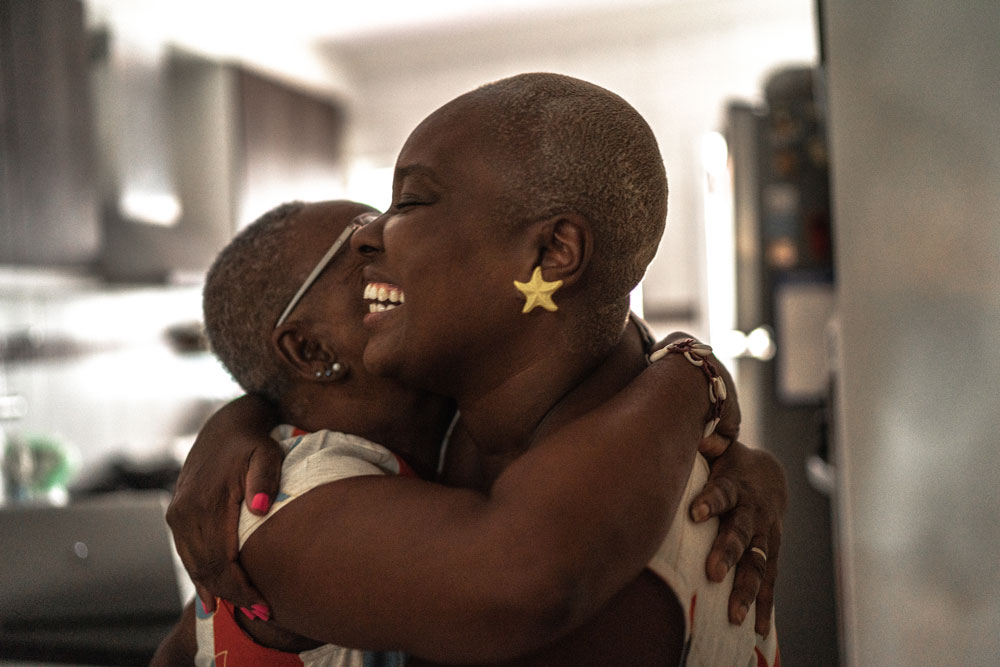CNS Summit Recap: The Future is Collaborative
Innovation is the lifeblood of research and development in any industry. Scores of industry efforts spanning digital therapeutics, data sciences and decentralized clinical trials represent the greatest opportunity to positively impact patient experiences and outcomes in the history of clinical research.
How do we change the status quo? How do we scale innovation across development portfolios? What can we learn from looking externally? How does a company of 100,000+ employees become more “start-up-like?” And most important, how can we ensure recent progress is sustainable? These were among many thought-provoking questions raised at the 2021 CNS Summit by entrepreneurs, change agents and industry leaders.
The CNS Summit is a community collaboration event which explores the intersection of technology and science through emerging discoveries and practical applications impacting drug discovery, clinical development, and healthcare delivery.
Select highlights and key themes included:
Decentralized Trials
Jamie Macdonald, CEO, Parexel moderated a discussion on innovative ways to conduct DCTs that included Jacob Elkins of Sarepta Therapeutics, Deena Bernstein of Datacubed Health and Tony Clapsis of CVS Health. Discussion focused on two central questions: Are we making it any better for the patient and what can we improve upon, moving forward?
While the rapid adoption of teleheath, mobile clinics and home health bode well for scaling DCTs, we need to consider “technology as an enabler to deliver services more conveniently to patients” advised Clapsis, and “how to design hybrid models that accommodate patient preferences,” added Bernstein.
Conceding that many outcome assessment tools are subjective, Dr. Elkins spoke about the opportunity to validate digital measurements to improve scientific endpoints. When the pandemic forced the use of remote video assessments, he noted that implementation was challenging but data quality did not suffer.
Panelists were united in the necessity of flexible protocols, supported by technologies that are easy to use as critical success factors for deployment. Dr. Elkins wrapped up the discussion with a collective call to action, stating the need to transition endpoints before the life science industry can fully transition to digital health.
Industry representatives David Coman of Science 37, Michelle Longmire of Medable and John Reites of Thread kicked off day one with discussion on DCT sustainability. Coman spoke to higher performance across recruitment timelines, retention rates and participant diversity compared to traditional study designs as proof of confidence that DCTs are here to stay. Acknowledging the remaining work ahead with supporting investigator site and patients, Reites concluded that benefits outweigh challenges.
“Sites are not going away” explained Dr. Longmire as the discussion shifted towards optionality in clinical trials, a concept focused on dynamic patient choice between on-site clinic visits, at-home assessments involving telehealth, nursing visits or alternative community care settings.
David MacMurchy of Lightship reinforced the need for optionality in a fireside chat with Dr. Amir Kalali, Chief Curator of the CNS Summit, summarizing “trials are about people, and we need to make it easy for people to have choice.” He challenged the audience to think about a “third-place” concept for clinical trial participants, with a level of granularity that allows patients to choose their research setting by each visit instead of the whole trial schedule.
Sensor Technology
The integration of wearable sensors in clinical trials is steadily increasingly, with some predictions estimating 50% penetration in clinical trials by 20251. Keith Wenzel of Parexel’s Scientific Data Organization offered insights during a spotlight session entitled Opportunities and Challenges of Collecting Wearable Data, with Jeremy Wyatt of Actigraph, John Reites of Thread and Craig Lipset of Clinical Innovation Partners. A range of physical, behavioral activity and vital sign monitoring digital solutions offer improved precision over current measurements across multiple therapeutic areas, such as neuroscience, cardiovascular, endocrinology, immunology, and oncology. While panelists agreed that device logistics, user training and regulatory ambiguity present the greatest challenges, Lipset conceded the industry needs to do a better job of generating bodies of evidence that demonstrate regulatory rigor. Wenzel argued that regulators have become more accessible in recent years through active participation in industry conferences and dialogue. He advised the audience that if sensors meet fit-for-purpose criteria, methods used in DCT trials should be acceptable to regulators. Additional recommendations directed the audience to keep patients informed about what data they have contributed, and focus on the data that can be captured instead of an abundance of data.
Diversity, Equity and Inclusion
It’s a well-known fact that only one or two percent of the general patient population participates in clinical trials. The need for clinical trials to reflect the disease population of the investigational treatment is widely acknowledged, but many barriers remain, a topic explored in multiple forums. One crucial step to increasing ethnic minority representation begins with expanding the diversity of trial staff.
A panel of experts including Jamie Macdonald of Parexel, Kemi Olugemo, MD of Ionis Pharmaceuticals, Daniel Perez of MACRO Trials and Gil Bashe of Finn Partners offered their insights on DE&I: Wisdom Gained During the Pandemic. Panelists affirmed that inclusive and diverse trial representation is more than having the right investigators. It also requires building diverse workforces and organizational cultures.
Dr. Olugemo offered advice on approaches to build organizational diversity that included talent cultivation partnerships with high schools and colleges as well as mentorship and sponsorship for underrepresented groups.
“Life science companies who commit to diversity and inclusion on an organizational level will perform better” declared Macdonald, speaking to the evolution of Parexel’s diversity practices, from its origin in gender equality efforts.
Dr. Kyu Rhee, Senior Vice President and Aetna Chief Medical Officer at CVS Health described how CVS is reimaging healthcare to be more consumer centric through brokering trust with diverse communities. In demonstrating CVS’ efforts to offer a new local clinical trial experience and develop a diverse workforce, Dr. Rhee shared that 70 % of Americans live within three miles of a CVS pharmacy. 40% of CVS’ 40,000 pharmacists, and 80% of CVS’ pharmacy techs are represented by ethnic minorities.
AI and data sciences
Novel AI solutions took center stage as an effective way to stratify study populations, accelerate trial timelines, enhance operational performance, predict and manage risk, and generate levels of sensitivity in data analysis not possible before.
During spotlight session Leveraging AI to Accelerate Clinical Research, representatives from AiCure, UnLearn and Holmusk shared solutions to derive unique insights into patient experiences, behavior and operational performance for inferences and predictive capabilities. Rich Christie, CMO, AiCure offered case examples from their computer vision model to demonstrate the effectiveness of remote patient monitoring and dosage confirmation from a smart phone, as a replacement for directly observed interaction. Charles Fisher, CEO, UnLearn discussed their work with digital twins to increase trial power and enable patient-level insight.
Remarking on how AI will evolve in drug development, Shahram Ebadollahi, Chief Data and AI Officer of Novartis advised the audience “to get used to his title.”
Defining the challenge for drug development as “the ability to inject decision-enabling functions into the operations workflow,” Ebadollahi shared how Novartis is moving beyond proof of concept to use AI at scale, with a goal to make clinical development operations twice as efficient and find twice as many patients. Novartis now optimizes its 500+ clinical trials like a control tower. AI techniques provide an early warning system, through predictive analytics for potential quality and compliance issues. Ebadollah concluded the true value of AI is organizational agility. Agility not only allows organizations to quickly evolve and adapt to emerging forces; it also enables the ability to constantly introduce disruptive technologies.
Amy Abernethy of Verily Life Sciences and Najat Khan, PhD of The Janssen Pharmaceutical Companies of Johnson & Johnson reflected on how they leveraged data sciences to take decision support to new levels during the COVID-19 pandemic.
Dr. Khan described how Janssen used machine learning for prediction of outbreak clusters to guide site selection and patient recruitment. Prediction accuracy was greater than 90% and these novel methods and cut six weeks off development time for a COVID vaccine, while helping to reach a more diverse trial population.
Framing the COVID pandemic as a longitudinal story, Dr. Abernathy emphasized the need to use data sciences to continually learn and improve inclusivity. She referenced the efforts of Project Baseline as seminal work in connecting clinical trial with real world data, so participants can understand the totality of individual heath data over time though access to rich longitudinal data.
The Future
Collaboration remains a central theme of the CNS Summit. Conference discussion reflected widespread agreement that the most expeditious road to the future is paved with transparency and knowledge-sharing, especially from organizations outside of the life sciences industry.
We can look to IBM and Microsoft for ways to become more agile and data-driven; CVS Health and Aetna for ways to become more consumer-centric and Amazon for ways to adopt all three of these desired attributes to help make clinical trials as accessible as over-the-counter drugs.
The greatest scientific breakthroughs occur when the research community collaborates. The 2021 CNS Summit reinforced why we need to embrace our partners. As novel trial designs mature, and collaboration among technology, life sciences and consumer worlds continue to bear fruit, patients will be the ultimate benefactors.
Related Insights
Article
Human-in-the loop AI: a proven approach to streamlining PV case processing and review
Oct 7, 2024
Article
3 ways to incorporate DE&I in your communications strategy
Sep 29, 2021
Blog
Inclusion for all: Expanding trial accessibility for transgender and nonbinary patients
Sep 23, 2022
Blog
Membership in Clinical Research Data Sharing Alliance enables Parexel to shape the future of clinical trial data
Sep 7, 2022
Blog
Digital Biomarkers – The Future of Precision Medicine
Jul 21, 2022
Podcast
RBQM Podcast Series | Episode 3: Staying within the Guardrails: How to Push the Boundaries in a Highly Regulated Industry
Jun 16, 2022
Blog
Toward more inclusive studies: Reaching and retaining patients from underrepresented communities
Apr 25, 2022
Blog
Six steps to maximize inclusivity within medical communications | Part 1: Race and Ethnicity
Mar 3, 2022
Article
How biotechs can strengthen their value story with advanced analytics
Feb 15, 2022
Blog
Clinical pharmacology, modeling and simulation to support FIH study design
Oct 21, 2021
Blog
Actigraphy advances a patient-first approach: Reduce patient burden — and make the most of valuable data
Oct 15, 2021
Blog
Capitalizing on sensors in clinical trials
Sep 20, 2021
Related Insights
Article
Human-in-the loop AI: a proven approach to streamlining PV case processing and review
Oct 7, 2024
Article
3 ways to incorporate DE&I in your communications strategy
Sep 29, 2021
Blog
Inclusion for all: Expanding trial accessibility for transgender and nonbinary patients
Sep 23, 2022
Blog
Membership in Clinical Research Data Sharing Alliance enables Parexel to shape the future of clinical trial data
Sep 7, 2022
Blog
Digital Biomarkers – The Future of Precision Medicine
Jul 21, 2022
Podcast
RBQM Podcast Series | Episode 3: Staying within the Guardrails: How to Push the Boundaries in a Highly Regulated Industry
Jun 16, 2022
Blog
Toward more inclusive studies: Reaching and retaining patients from underrepresented communities
Apr 25, 2022
Blog
Six steps to maximize inclusivity within medical communications | Part 1: Race and Ethnicity
Mar 3, 2022
Article
How biotechs can strengthen their value story with advanced analytics
Feb 15, 2022
Blog
Clinical pharmacology, modeling and simulation to support FIH study design
Oct 21, 2021
Blog
Actigraphy advances a patient-first approach: Reduce patient burden — and make the most of valuable data
Oct 15, 2021
Blog
Capitalizing on sensors in clinical trials
Sep 20, 2021







